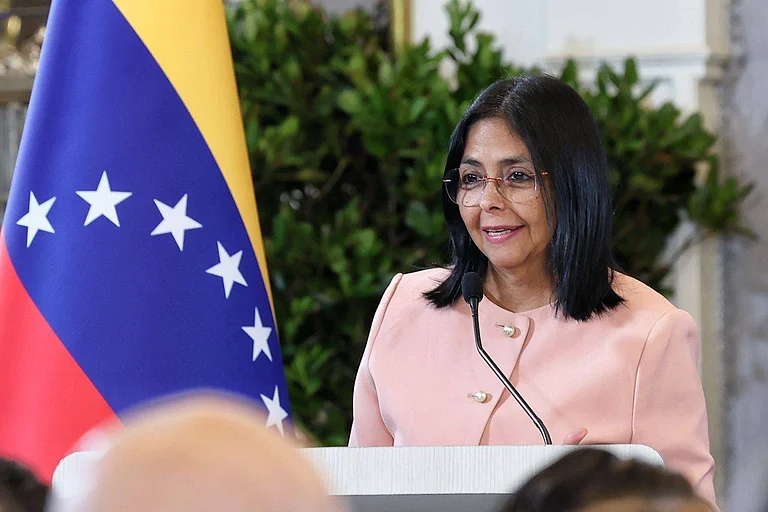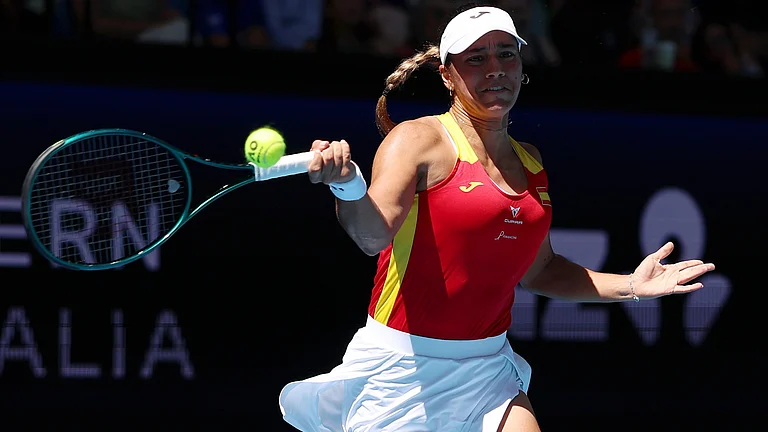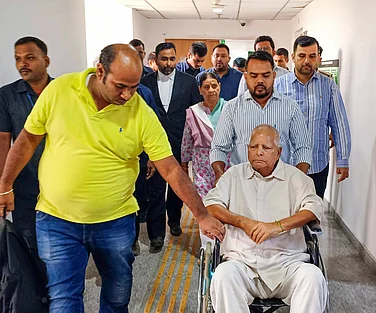Infant Mortality Rate (IMR)
- UP 64
- India 41
Availability of doctors Paediatricians at CHCs in UP
- Required 773
- In position 154
- Shortfall (%) 80.1
***
It’s 9 pm and Gorakhpur’s hipsters are out, all set to cruise town in their swish sedans. The morning’s snarl-ups are easing—traffic is a pet peeve for townspeople—and the 150-year-old Gorakhpur Club is letting spirits flow. We find here a doctor, a builder and a miner, an assortment of jet-setters. You’d think they count themselves among the lucky in this city, but no. They too start chafing the moment they are made to recall those two days in August last year when 52 people died, 34 of them children, in the city’s largest government hospital. The citizenship of Gorakhpur is like a zone of shared pain and anger.
August 9-10, 2017, is a red circle on the calendar—the day when Gorakhpur hit the national headlines. But those two days only expressed, in concentrated form, a sickness that hasn’t been cured. People say nothing has changed at Baba Raghav Das (BRD) Medical College in this one year. And even that’s only a symptom of what’s wrong, a hint of the sheer enormity of failure. Among medical professionals and policy planners, there’s dismay at the serious shortcomings haunting public healthcare, especially child care, in the whole rural catchment area surrounding Gorakhpur. This is why the middle class and poor, as much as the elite, don’t want their children to grow up here. For the wealthy, the dream is to migrate overseas; the poor want to catch a train to a big city.

Children’s ward in a Lucknow hospital
Worse, Gorakhpur isn’t alone. It just offers us a metaphor for the abysmal state of children’s healthcare in India. Those chilling scenes from BRD find eerie echoes all over the map. In Nashik, tragedy befell 187 babies last year in the district hospital. Calcutta cannot forget September 2013, when 35 children died in five days in eastern India’s biggest paediatric hospital. Deaths at GB Pant paediatric hospital in Srinagar hit the headlines in 2012. None of them were in reality only ‘events’ occurring within a tiny time-horizon; they were markers of a general process of decay, punctuated by seasons of death. As exemplified by Uttar Pradesh health minister Siddharth Nath Singh’s infamous remark that “children die every year in August”.
Thus, the State’s abdication is almost naturalised. What’s worse is that many of these deaths are from curable or preventable conditions. Gorakhpur is notorious for typhoid and malaria. But there’s also the dreaded Japanese Encephalitis (JE), a viral infection spread by mosquito bites that kills 25 per cent of those infected, and permanently disables another 25 per cent. Two crore more Indians live in JE-prone zones of eastern UP and beyond. The disease loves children; the more undernourished, the more susceptible they are.
JE is one of many diseases now classified under the broad umbrella of AES, or acute encephalitis syndrome. “JE accounted for 10-15 per cent of the total AES cases that came to us last year,” says BRD principal Ganesh Kumar. AES refers to any patient with high fever and delirium, a dangerous condition that requires urgent hospital care. Indeed, many common viral and bacterial infections such as typhoid, malaria, dengue or tuberculosis can end up as AES. BRD did not confirm this, but neonatal encephalitis may have caused a fourth of infant deaths last August.

Sushmita Nishad, 13, of Manbela lives only 10 minutes from BRD Medical College. Her father Manoj took her there too late, after she had fever and delirium for several days. The disease left her partially disabled.
Tracing the JE story is one way to diagnose the larger sickness. JE has a vaccine, but Gorakhpur’s health administrators say infections would keep pouring in even if they vaccinate all children in town—which they haven’t. BRD is the lone big public hospital for at least six neighbouring districts, and the only one with expertise to treat AES within a 350-km radius. “We are equipping primary health centres (PHCs) so BRD gets fewer AES patients. We hope 2018 will be better, but it depends on the number of cases,” says Gorakhpur’s chief medical officer (CMO) Upendra Tripathi. An oddly equivocal statement, coming just a month before monsoons, when the encephalitis rush begins.
READ ALSO: What’s Best For The Kid?
How many and when are key variables, and therein lies an essential part of the story. Of the 3,000 patients who visit BRD daily, many arrive too late, after first having visited ‘jhola-chhap’ doctors, as quacks are known here. Which means, essentially, that rural healthcare has failed them. It either isn’t there, or is grossly inadequate. This is a common theme across India. In the hinterland around Nashik visited by Outlook, whatever exists by way of primary healthcare is so under-staffed, so poorly provided for, that doctors can only refer patients down the line. So, parents head from primary to secondary to district hospital, and they crumble under thousands of sick children (see ‘The Broken System That Kills the Kids’).
But, Gorakhpur first. During several visits by Outlook to BRD early in June, the hospital appeared far from combat-ready. The usual dereliction is everywhere: bulbs hang from naked wires, a disgracefully unhygienic water tap sits next to the principal’s office. Inside, Ganesh Kumar is a tad stoic. “We could get the same number of patients this year, or we could get twice as many,” he says. Not reassuring, considering things look as creaky as before, if not worse. In February, BRD was ravaged by fire. Then there’s that chilling and conspicuous absence: no doctors are to be seen in its paediatric wards.
The hospital has 950 beds, of which 500 are for children. Yet, it has only six paediatricians. Of its 163 posts for doctors, 27 are vacant as of June. Every doctor handles up to 400 patients on some days. “I recently appointed 12 doctors, but only two showed up. Doctors fear being suspended so they don’t come here,” says Kumar, alluding to the nine doctors arrested last year, seven of whom are still in Gorakhpur jail, following the oxygen fiasco.
It’s a curiously Indian paradox: medical colleges are proliferating, but doctors can’t be found in key nodal hospitals that service entire rural swathes around it. It’s as true of Karnataka (see ‘Where Fewer Babies Die Now’) as it is of UP, where there’s an unmet need for 7,000 doctors! “It’s a contradiction for which our public healthcare suffers badly,” says A.K. Sharma, professor of sociology at IIT Kanpur. “Every government department—health, education, sanitation—has staff shortages even as unemployment persists,” he says.
How do these contradictions exist—why does the demand-supply dynamic not plug this gap? In his research, public policy and planning expert Santosh Mehrotra, who teaches at JNU in Delhi, found systemically created shortages everywhere. In a 2017 study, he notes that only three of 13 UP medical colleges had regular principals. Incidentally, BRD’s last principal, Rajeev Mishra, was an ad-hoc man—he is currently in jail, facing trial for the oxygen fiasco.

Ward 100, the children’s ward in BRD Medical College, Gorakhpur
The lack of prioritisation shows everywhere. In its latest budget, UP hiked the outlays for roads and electricity the most. Mirroring the national trend, the smallest increases were reserved for health and education. “And they already have much less per capita expenditure on social services than any other state,” says Ajit Kumar Singh, former director, Giri Institute of Development Studies, Lucknow. Then, putting his finger on the nub of the issue, he says, “Rural healthcare must improve. It’s in very bad shape. And the largest population lives there.”
Here, Sharma zeroes in on the PHC as the last point of healthcare delivery. “It must become a hub, not an adjunct, to healthcare needs,” he says. “PHCs try to tackle everything from vaccination to nutrition and get nowhere. We have opened too many fronts., weakening and fragmenting PHCs as a result.”
Rural healthcare is not big news, unfortunately. It’s easier to announce six super-specialty hospitals, as the latest state budget did. It becomes a point of interest briefly only during polemical comparisons between the social indices of, say, UP and Kerala. “UP’s case is unique. Its elite, unlike Kerala or Tamil Nadu’s, are indifferent to its masses’ conditions,” says Singh. That may be a sweeping statement of despair, but something systemic is surely wrong.
Corruption is not a unique factor, though UP is no laggard there. Its primary health funds come from the Centre, and we saw the NRHM (National Rural Health Mission) scam make for some blood-splattered headlines in 2010. “Once the Rs 10,000 crore outlay reached UP, Rs 5,000 crore was siphoned off! You can imagine the state of governance,” says Singh. Yes, culpability must be fixed. For, disease and poor health are socially produced. Especially where enabling conditions converge—that is, when poverty and its commonest corollary, malnutrition, are met by a resource drought, made worse by expropriation by local elites. It’s a toxic cocktail of circumstances that visits nightmares upon the common Indian.
Ramesh Kumar of Belipar, an hour’s drive from Gorakhpur, was one of those who got a surplus of it last year. On August 10, he took his 12-year-old daughter, Vandana, to a private hospital with high fever. They referred her to BRD, since they suspected she had AES. Ventilator support, a prerequisite in many such cases, can cost Rs 15,000 a day in private clinics, which rules them out for people like Ramesh, who works as a driver.

Pregnant women at SNR Hospital, Kolar
Vandana’s treatment started at 9 pm. The night passed fitfully as her condition worsened. She was moved to another ward in the wee hours with breathing difficulty. At around 3 am, she lost her vision. Ramesh had been given an Ambu bag—a handheld device used to resuscitate patients during emergencies when ventilators are out of order or unavailable. “There was no oxygen in the hospital. So I operated the device all night,” says Ramesh. “It gave her a lot of relief.”
At 5 am, Ramesh left for the blood bank. A doctor asked him to let a nurse operate the Ambu bag, as his brother wouldn’t be allowed into the ward. When he returned an hour later, Vandana was lying alone, very still, with nosebleed. The device lay beside her. “The nurse had abandoned her. Many children had already died, though the doctors weren’t admitting it,” he says.
Hospital staff soon evicted Ramesh and other parents from the children’s ward. Minutes later, they saw paediatrician Dr Kafeel Khan rush in. “Dr Kafeel was drenched in sweat. Soon after he arrived, doctors re-inserted pipes into patients and got busy again,” Ramesh says. Dr Kafeel is credited with arranging scores of oxygen cylinders on August 9, 10 and 11, to make up for the disruption in supplies. Inexplicably, he was among the nine jailed BRD employees—currently he’s out on bail and spoke to us (see interview).
Vandana could not be saved. An anguished Ramesh let a doctor take most of her medical records and, though he tried, never got them back. Hospital staff made bereaved families leave quickly and quietly through a rear exit, an act that has not been probed although it reeks of how inequality besets rural care-seekers. Outlook saw the record that stated Vandana died of “acute meningo encephalopathy (sic)”—one of many forms of AES.
Kumar, the principal, is keen to deflect the focus away from oxygen supply disruption. “The media added up all deaths and blamed oxygen shortage, although it was there only for one night. The last five year’s data shows there has been no real change in casualties,” he says. Morbid business, this comparison. Deaths were indeed very high for years, but those hours last year were lethal: hospital records themselves show a sharp spike. On August 7, 8 and 9, there were 9, 12 and 9 deaths respectively. But on August 10, suddenly, 23 children died. By August 11, as oxygen supplies normalised, they fell to 11. But Kumar echoes a number of official reports and submissions in court, seen by Outlook, which say lack of oxygen did not lead to casualties. “There were more deaths on one day as there were more admissions that day. But there was always enough oxygen—we had cylinder backup,” Kumar says.
If so, it’s unclear why BRD overhauled oxygen purchases later and initiated steps to buy it directly from a manufacturer, sidestepping middlemen. BRD also ramped up oxygen in stores to 300-400 cylinders from last August’s 52. “If there was no problem with oxygen, why are seven people, including my parents, in jail for the last eight months, charged with attempt to culpable homicide,” says Purak, former principal Mishra’s son. “Imprisoning all these people only ensures their version is not heard.”
A tour of Gorakhpur rural suggests a tough 2018 monsoon ahead. In Rasulwapur village, near Khajni, two hours from town, mosquitoes and flies assail you even in peak summer. Drinking water, drawn from hand-pumps, seems at serious risk of contamination for almost no toilets have been built under the Swachh Bharat Abhiyan. An electricity transformer blew up five years ago and was never fixed. In Rasulwapur, the State is an occasional visitor.
“Breeding grounds for encephalitis and other diseases that are 100 per cent preventable,” says Dr R.N. Singh, a prominent Gorakhpur paediatrician. The earlier theory that encephalitis is always mosquito-borne has been junked. Now it’s believed half the cases are caused by scrub typhus, which can be treated with antibiotics. For JE, though, there is still only vaccination or palliative care.
“If typhus can be cured with antibiotics, deaths due to encephalitis should have halved too—that hasn’t happened,” says Dr Singh says. In 2005, JE accounted for 90 per cent of encephalitis cases in Gorakhpur and around. Once ventilators were introduced that year, mortality dropped from 1,400 to 500. “That’s where we are even today,” Dr Singh says. Some years ago, water-borne enterovirus-led encephalitis was also discovered. “There’s no vaccine for that…the only solution is better hygiene,” he says. Which is virtually an unheard-of thing.
For 40 years, governments have fought encephalitis intermittently. “They start in July and stop in September, when the illness peaks. Prevention should be all year long, not when the disease hits us hard,” Dr Singh says. This year, Gorakhpur held a 15-day drive against encephalitis in April, under the Dastak scheme. Another 15-day round is scheduled for July. This, he feels, is inadequate. CMO Tripathi says 14 departments are “coordinating to tackle the total disease and malnourishment burden”. Water, agriculture, fisheries and sanitation are part of the effort. “Chlorine tablets, washing of hands, full-sleeves clothing”…the works.
In Harpur Budhat, an extension of Rasulwapur, however, there’s no sign of all that. Two nearby health centres, at Tama and Harnahi, were locked when Outlook visited. The former is being used as a toilet. Residents complain their pradhan does not sanction Swachh Bharat toilets for poor Dalit families. We meet up with Krishna, an ASHA worker, who says, “I do the rounds in villages since the Tama centre is unusable. I can handle vaccination, but we don’t get antibiotics or medicines for fevers and pains despite several complaints.”
Tripathi acknowledges some sub-centres were incomplete or abandoned. “We have funds to overhaul 30 of them,” he says. He suggests a visit to another sub-centre in Sahjanwa proper, where a new encephalitis treatment centre is under construction. All medicines will be free. The idea is to treat fevers as close to home as possible, as Tamil Nadu has done, so as to avoid treatment delays, a major cause of infant mortality. The bad news: the duty doctor was asleep in the only air-conditioned room. In the 12-bedded ward, the only patient’s family complains that auxiliary staff extorted Rs 2,050 from him and another patient. “Treatment is meant to be free, but we wanted no problems, so we paid up,” says Satish Maurya, a 22-year-old tea-seller whose wife delivered a child here. The doctor, shaken awake, said he had no knowledge of what was going on.
Delays, created by the sub-par infrastructure in the hinterland, are a real killer. Ask Kamla and her daughter-in-law Kanchan. A primary and then a secondary healthcare centre, where Kanchan was brought with unknown pregnancy complications, both cited a lack of doctors and expertise. She had to go to a private hospital in Gorakhpur finally. Match that experience against the statistics. Mehrotra’s study says only a quarter of UP’s sub-centres, PHCs and community health centres (CHCs) are in place. Less than five per cent of the PHCs are functioning. There are fewer PHCs and CHCs in UP than Kerala or Tamil Nadu, and these cater to a population that’s double the combined population for Tamil Nadu and Kerala. Also, in 2017, UP had one allopathic doctor per 3,467 persons. The norm is 1:1,000.
The consequence of such pervasive deprivation? Soon after birth, Kamla’s grandson’s foot turned blue. This is usually a temporary condition indicating poor blood circulation. Oxygen helped, but the family had to shift out from two private hospitals, unable to afford either. They sought referral to BRD, where treatment is free. Records state the baby was premature and had low birth weight. On August 8, doctors told Kamla the child would be ready for breastfeeding the next day.
On August 9 was scheduled a visit by Chief Minister Yogi Adityanath. In preparation for his arrival, the hospital closed its gates. “We were not allowed inside. All parents were out on the road,” says Kamla. The families were allowed inside only at 4.30 pm. “The same night, children started dying. We are very poor and in debt. For eight years, we took loans for (fertility) treatments and this child was born. Modi-Yogi took even that from us.” She and her daughter Rina weep, recalling a nurse telling them: “Tumhara babu mar gaya—your baby is dead.” Neither the grief nor the bewilderment at the unexplained twist has left them.
Gorakhpur is a symptom. Health, as a consumer choice, is in your face. The town offers virtually limitless options to the rich sick. A paying customer can walk into any of its 100 private hospitals. For those beyond the pale, there’s either the jhola-chhap or the BRD, where roughly 7,000 patients die every year.
By Pragya Singh in Gorakhpur


























